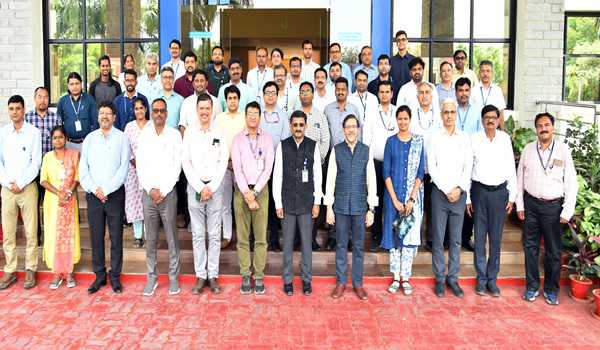ISRO organises National Science meet on Chandrayaan-4 Lunar Sample Return Mission
- Tuesday, 24 April,2025
- 7 comments
Chennai, Apr 24 (UNI) The Indian Space Research Organisation (ISRO)
organised a national meet on the potential aspects of lunar sample science
in the context of the forthcoming Chandrayaan-4 mission planned for launch
in year 2027-2028 time frame, which aims at returning lunar samples back
to the Earth.
This national meet was attended by the lunar science community engaged
in analysing meteorite samples, terrestrial analogs, lunar soil simulants, as
well as the scientists who are keen to constraint the remote sensing
observations of the lunar surface with ground-truth experiments with the
returned-samples.
The participants comprised about 50 scientists; almost 50 per cent of them
represented 12 research and academic institutes (outside the Department
of Space), including private academic institute, across the country, ISRO
said in an update on Thursday.
In the opening remarks, M. Ganesh Pillai, Scientific Secretary, ISRO, emphasised
on the significance of this national meet in the context of the Chandrayaan-4 mission,
fitting in the overall road map of India’s lunar exploration programme as a major
milestone, which would eventually lead to India’s first human-spaceflight mission
to the Moon by the year 2040.
Dr. Tirtha Pratim Das, Director of the Science Programme Office, ISRO Headquarters,
elaborated on the context of the national meet, and the roles of the Indian lunar
researchers towards a science-driven, well-planned lunar sample-return mission.
Dr. Anil Bhardwaj, Director, Physical Research Laboratory (PRL), Ahmedabad appraised
the scientific community about the legacy of PRL for the analysis of the lunar, as well as
meteorite samples.
There were deliberations from the teams from the U R Rao Satellite Centre (URSC),
ISRO on the plans for the lunar sample curation and analysis facilities, as well as on
the Chandrayaan-4 mission.
The detailed deliberations, made by scientists and academicians from several national
institutions and academia, addressed the aspects of outstanding problems in lunar
science, scientifically rewarding potential lunar landing sites, as well as the advanced
analysis of the returned-samples.
UNI GV 1315

